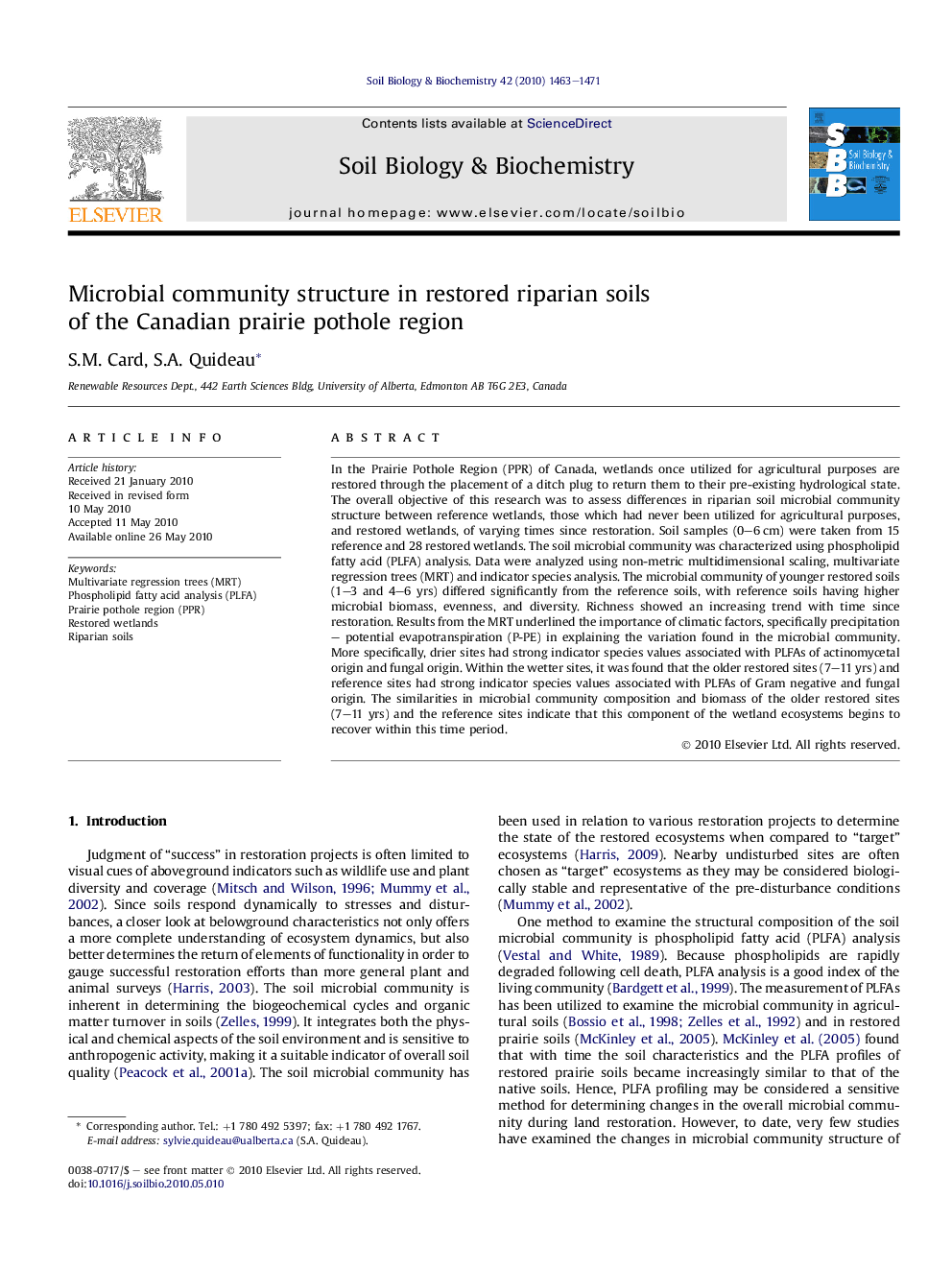| Article ID | Journal | Published Year | Pages | File Type |
|---|---|---|---|---|
| 10846115 | Soil Biology and Biochemistry | 2010 | 9 Pages |
Abstract
In the Prairie Pothole Region (PPR) of Canada, wetlands once utilized for agricultural purposes are restored through the placement of a ditch plug to return them to their pre-existing hydrological state. The overall objective of this research was to assess differences in riparian soil microbial community structure between reference wetlands, those which had never been utilized for agricultural purposes, and restored wetlands, of varying times since restoration. Soil samples (0-6Â cm) were taken from 15 reference and 28 restored wetlands. The soil microbial community was characterized using phospholipid fatty acid (PLFA) analysis. Data were analyzed using non-metric multidimensional scaling, multivariate regression trees (MRT) and indicator species analysis. The microbial community of younger restored soils (1-3 and 4-6 yrs) differed significantly from the reference soils, with reference soils having higher microbial biomass, evenness, and diversity. Richness showed an increasing trend with time since restoration. Results from the MRT underlined the importance of climatic factors, specifically precipitation - potential evapotranspiration (P-PE) in explaining the variation found in the microbial community. More specifically, drier sites had strong indicator species values associated with PLFAs of actinomycetal origin and fungal origin. Within the wetter sites, it was found that the older restored sites (7-11 yrs) and reference sites had strong indicator species values associated with PLFAs of Gram negative and fungal origin. The similarities in microbial community composition and biomass of the older restored sites (7-11 yrs) and the reference sites indicate that this component of the wetland ecosystems begins to recover within this time period.
Related Topics
Life Sciences
Agricultural and Biological Sciences
Soil Science
Authors
S.M. Card, S.A. Quideau,
